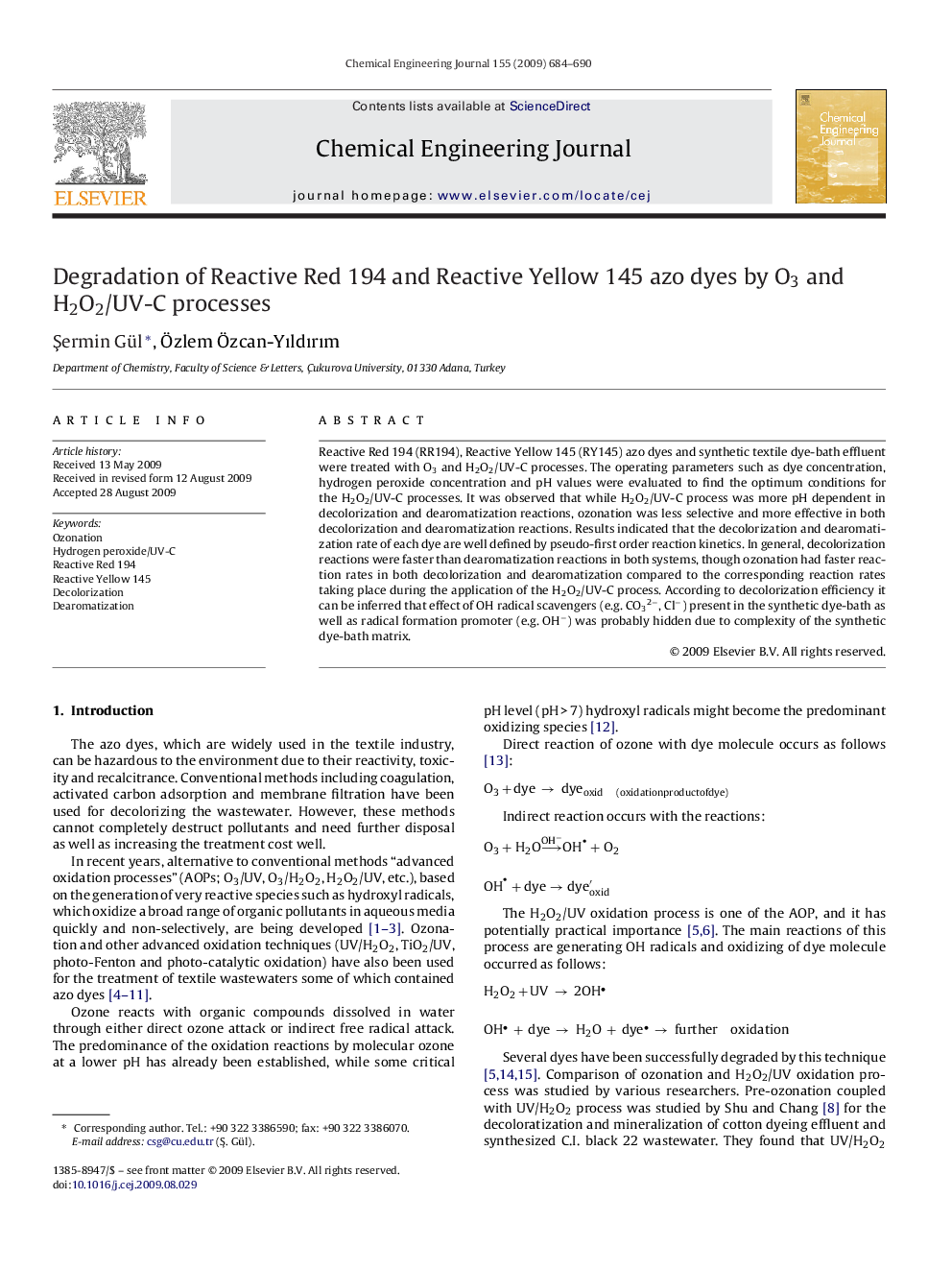| Article ID | Journal | Published Year | Pages | File Type |
|---|---|---|---|---|
| 151882 | Chemical Engineering Journal | 2009 | 7 Pages |
Reactive Red 194 (RR194), Reactive Yellow 145 (RY145) azo dyes and synthetic textile dye-bath effluent were treated with O3 and H2O2/UV-C processes. The operating parameters such as dye concentration, hydrogen peroxide concentration and pH values were evaluated to find the optimum conditions for the H2O2/UV-C processes. It was observed that while H2O2/UV-C process was more pH dependent in decolorization and dearomatization reactions, ozonation was less selective and more effective in both decolorization and dearomatization reactions. Results indicated that the decolorization and dearomatization rate of each dye are well defined by pseudo-first order reaction kinetics. In general, decolorization reactions were faster than dearomatization reactions in both systems, though ozonation had faster reaction rates in both decolorization and dearomatization compared to the corresponding reaction rates taking place during the application of the H2O2/UV-C process. According to decolorization efficiency it can be inferred that effect of OH radical scavengers (e.g. CO32−, Cl−) present in the synthetic dye-bath as well as radical formation promoter (e.g. OH−) was probably hidden due to complexity of the synthetic dye-bath matrix.
